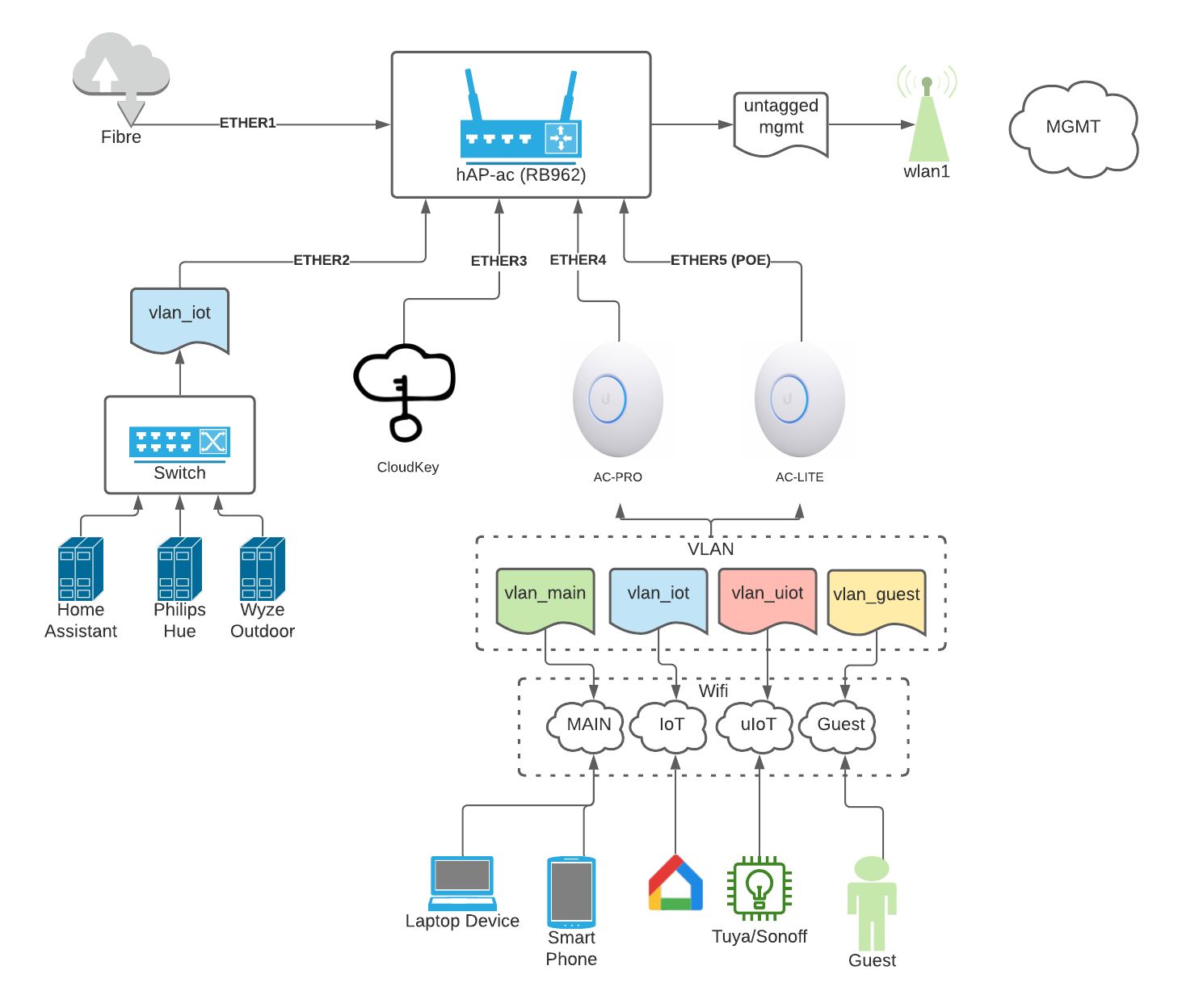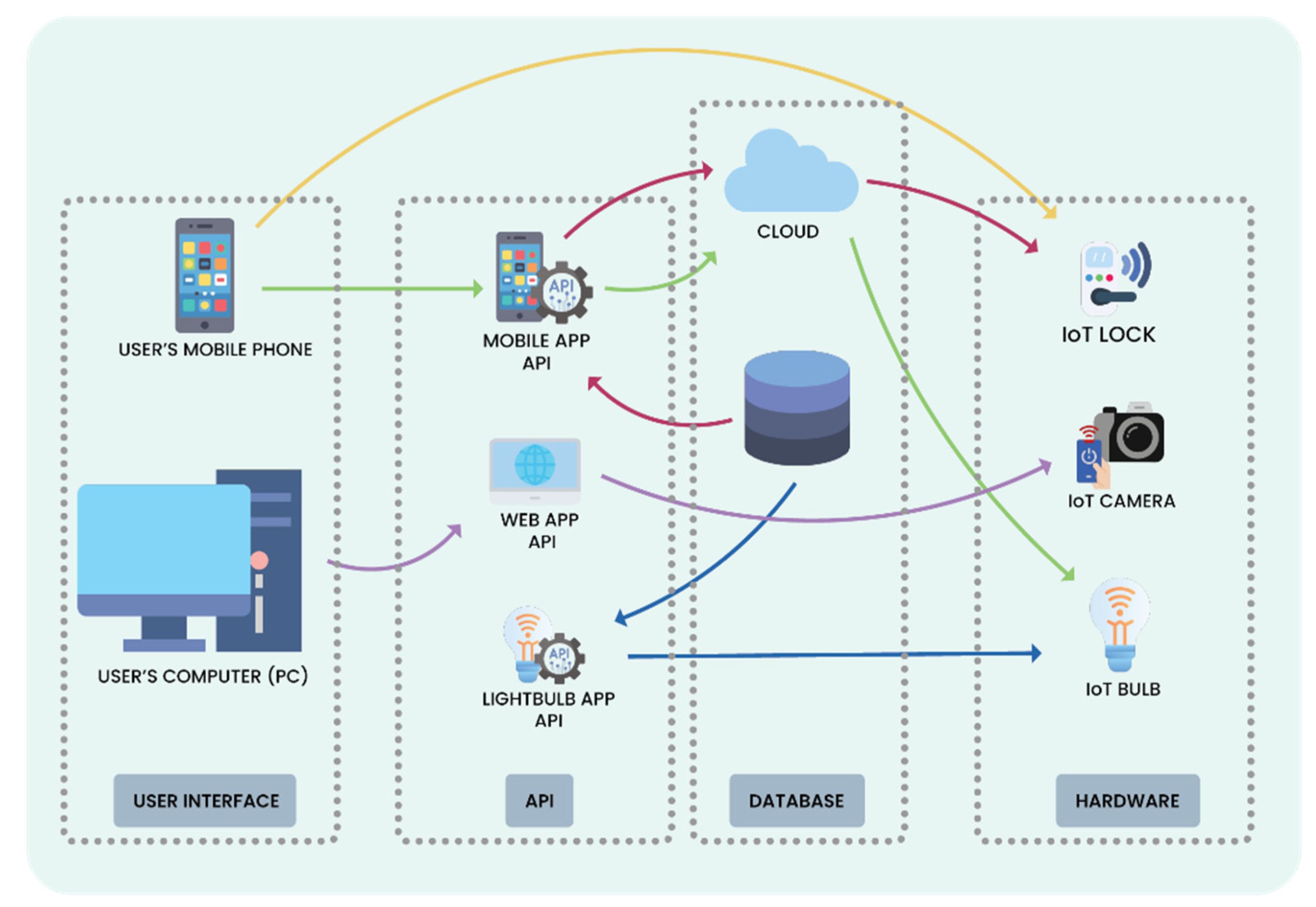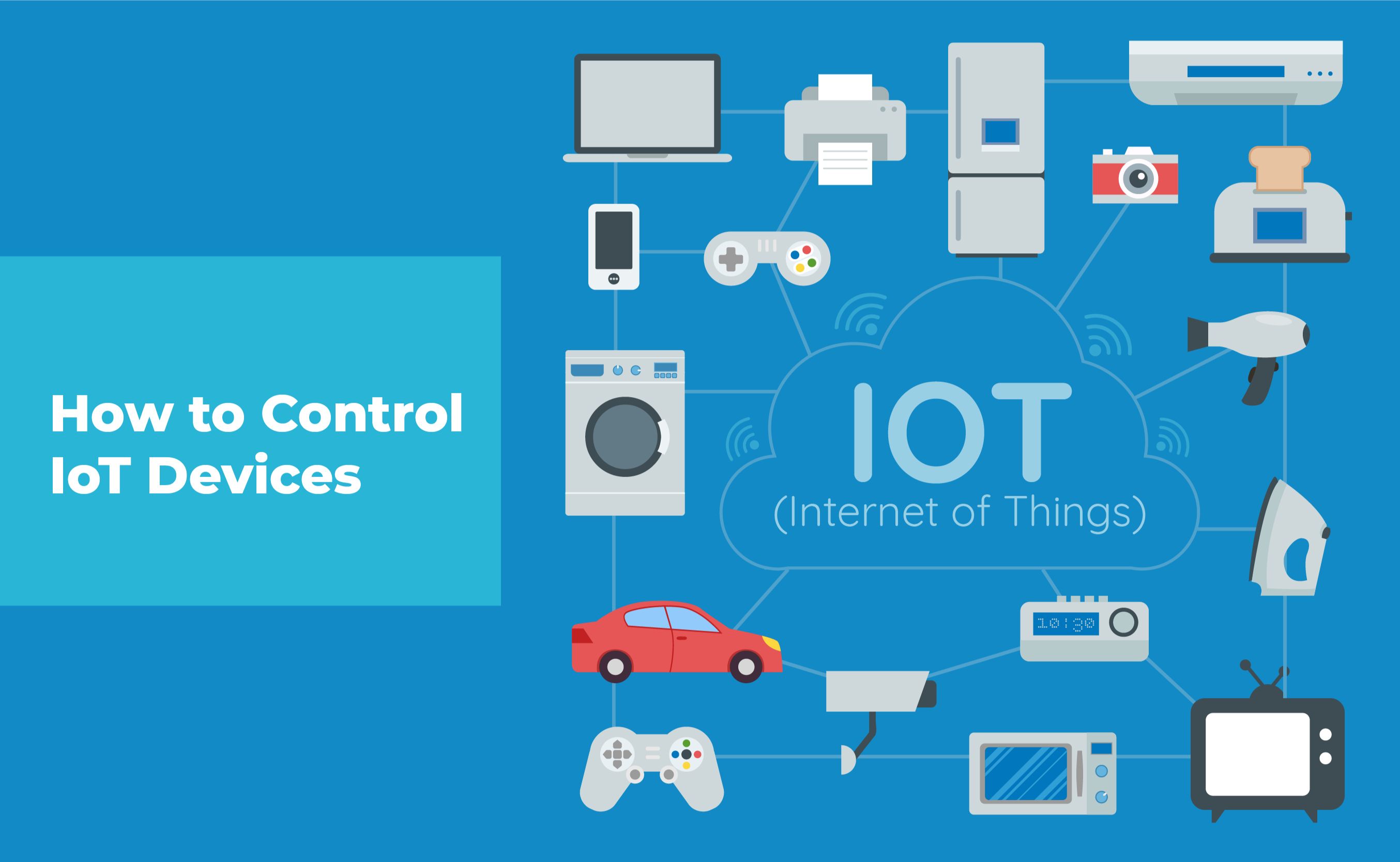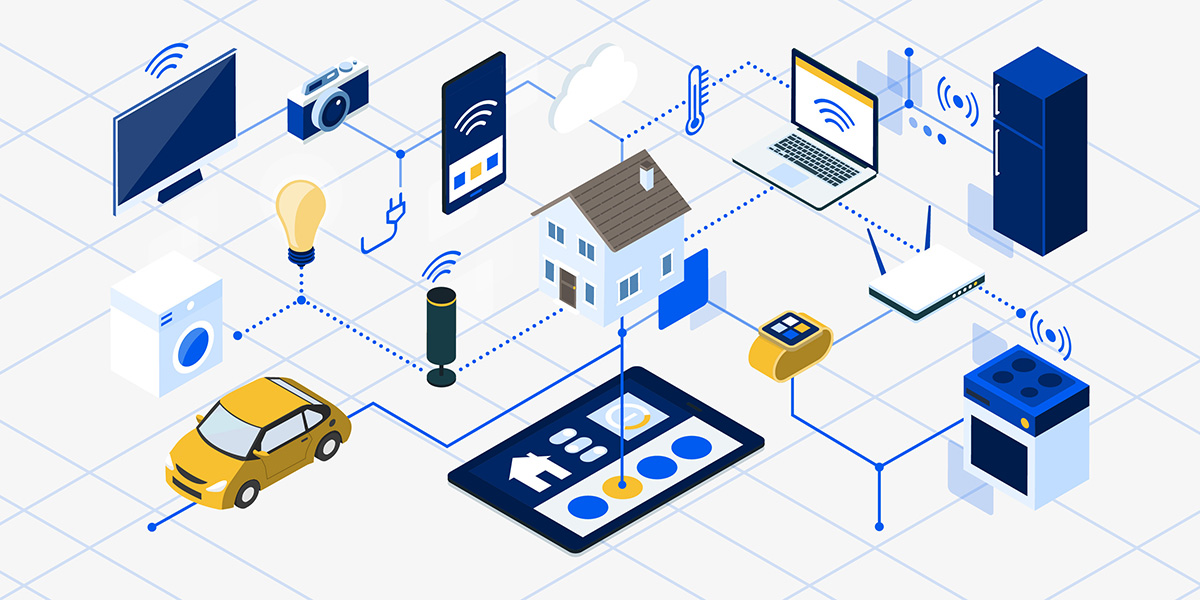Introduction
Welcome to the world of IoT (Internet of Things), where interconnected devices are revolutionizing our daily lives. The IoT is a network of physical devices – from smartphones and smart home appliances to industrial machinery and wearable devices – that are embedded with sensors, software, and connectivity, allowing them to collect and exchange data.
As the IoT continues to expand, it is crucial to consider the security and efficiency of your network infrastructure. One important aspect to address is whether to set up a separate IoT network. In this article, we will explore the benefits of creating a dedicated network for your IoT devices and provide a step-by-step guide on how to set it up.
Setting up a separate IoT network can bring numerous advantages. Firstly, it allows you to isolate your IoT devices from your main network. This separation enhances security, preventing potential vulnerabilities from spreading to other devices or compromising sensitive information.
Additionally, a dedicated IoT network allows you to optimize your main network’s bandwidth and performance. IoT devices, with their constant data exchange and communication, can consume a significant amount of network resources. By separating your IoT devices onto their own network, you can mitigate network congestion and ensure a smooth experience for all connected devices.
In the following sections, we will cover the step-by-step process of setting up a separate IoT network. We will discuss how to determine the scope of your IoT network, choose the appropriate network hardware, configure the devices, allocate IP addresses, implement network segmentation, and enhance security measures. By the end of this guide, you will have all the necessary knowledge to create a secure and efficient IoT network.
What is an IoT Network?
An IoT network refers to a system of interconnected devices that communicate and exchange data with each other through the internet. These devices, often referred to as “smart” or “Internet of Things” devices, are embedded with sensors, software, and network connectivity, allowing them to collect and share valuable information.
The main purpose of an IoT network is to enable seamless communication and data transfer between devices, facilitating automation, remote monitoring, and control. This network infrastructure enables various applications and services that enhance efficiency, convenience, and productivity across diverse industries.
IoT networks can range from small-scale deployments in smart homes and wearable devices to large-scale implementations in industrial settings, encompassing machines, sensors, and control systems. These networks can incorporate a wide range of devices, including cameras, thermostats, medical equipment, vehicles, and much more.
IoT networks involve the integration of multiple technologies, such as wireless communication protocols (e.g., Wi-Fi, Bluetooth, Zigbee), cloud computing, data analytics, and machine learning. These technologies work together to enable real-time data exchange, device management, and intelligent decision-making.
One of the defining features of an IoT network is its ability to capture and analyze extensive amounts of data. The sensors embedded in IoT devices can collect data on various parameters such as temperature, humidity, motion, location, and more. This data can be processed and analyzed to derive valuable insights, enabling businesses and consumers to make informed decisions.
Moreover, IoT networks pave the way for innovative applications such as autonomous vehicles, smart cities, healthcare monitoring systems, energy management, and predictive maintenance. These applications harness the power of IoT networks to enhance safety, efficiency, sustainability, and overall quality of life.
In summary, an IoT network is a sophisticated infrastructure that connects devices, sensors, and systems to enable seamless data exchange and communication. By leveraging this network, organizations and individuals can unlock new possibilities, streamline processes, and improve decision-making in various aspects of their lives.
Why Set Up a Separate IoT Network?
Setting up a separate IoT network offers numerous benefits, making it a recommended approach for managing IoT devices effectively. Here are the key reasons why you should consider creating a dedicated network for your IoT devices:
Enhanced Security: One of the primary reasons to set up a separate IoT network is to enhance the security of your connected devices and data. IoT devices can be vulnerable to hacking and cyber-attacks, which could compromise both the device itself and the entire network it is connected to. By isolating your IoT devices on a separate network, you can minimize the risk of unauthorized access and protect your valuable information.
Network Performance: IoT devices often require significant bandwidth and can generate a high volume of data traffic as they exchange information. Placing them on a separate network ensures that their data transmission does not congest your main network, allowing your other devices to operate smoothly without interruptions.
Resource Optimization: Due to their unique demands, IoT devices may require specific network settings and configurations. By setting up a separate IoT network, you can allocate network resources, such as IP addresses and bandwidth, specifically tailored to the requirements of your IoT devices. This optimization ensures efficient communication and minimizes conflicts with other devices on the network.
Isolation of Vulnerabilities: In the event that an IoT device is compromised or infected with malware, a separate network prevents the spread of the infection to other devices on your main network. This isolation limits the impact of security breaches, reducing the overall risk to your network infrastructure and other connected devices.
Better Control and Management: With a separate network, you gain increased control and management capabilities over your IoT devices. You can easily monitor and manage their connections, security settings, and software updates, ensuring optimal performance and responsiveness.
Flexibility and Scalability: A dedicated IoT network provides the flexibility to add or remove devices as needed without disrupting your main network. As your IoT ecosystem grows, you can easily scale your dedicated network to accommodate new devices, ensuring seamless integration and expansion.
Compliance and Regulatory Requirements: Certain industries, such as healthcare and finance, have strict compliance and regulatory requirements regarding data privacy and security. A separate network dedicated to IoT devices enables organizations to meet these industry-specific standards and regulations more effectively.
Overall, setting up a separate IoT network brings unparalleled security, improved network performance, optimized resource allocation, isolation of vulnerabilities, better control and management capabilities, scalability, and compliance with industry-specific regulations. By considering these benefits, you can make an informed decision about implementing a separate network for your IoT devices.
Step 1: Determine the Scope of your IoT Network
Before setting up a separate IoT network, it is crucial to determine the scope of your network. This step involves identifying the devices that will be connected to your IoT network, assessing their requirements, and understanding the specific goals and objectives you wish to achieve with your IoT implementation.
Here are the key considerations to help you determine the scope of your IoT network:
Identify IoT Devices: Begin by identifying the devices that you want to connect to your IoT network. These devices can vary depending on your specific use case, ranging from smart home appliances, wearables, and environmental sensors to industrial machinery and monitoring systems. Determine the number of devices and the types of data they will generate and exchange.
Assess Device Requirements: Each IoT device may have unique requirements in terms of network connectivity, bandwidth, security protocols, and data handling. Assess and document these requirements to ensure that your network infrastructure can support them effectively.
Define Objectives: Clearly define the goals and objectives you wish to achieve with your IoT network. Are you aiming to improve efficiency, enhance automation, enable remote monitoring, or gather data for analytics? Understanding your objectives will help you design a network that aligns with your specific needs.
Evaluate Scalability: Consider the potential growth and scalability of your IoT network. Determine whether the network needs to accommodate additional devices in the future and plan accordingly to ensure scalability without disrupting operations.
Consider Integration: Assess the existing infrastructure and systems that you have in place, such as routers, gateways, and cloud platforms. Determine how your IoT network will integrate with these systems to enable seamless data exchange and interoperability.
Resource Allocation: Analyze the network resources required for your IoT devices, such as IP addresses, bandwidth, and network segment allocation. Ensuring sufficient resources are available will prevent bottlenecks and ensure smooth communication between devices.
Budget Considerations: Set a budget for your IoT network implementation, including hardware, software, and ongoing maintenance costs. This will help guide your decisions and ensure that you stay within your financial constraints.
By thoroughly understanding the scope of your IoT network, you can plan and design a dedicated network infrastructure that meets the specific requirements of your IoT devices and aligns with your overall objectives. This step lays the foundation for creating an efficient and secure IoT network.
Step 2: Choose the Right Network Hardware
Choosing the right network hardware is a critical step in setting up your separate IoT network. The hardware you select will determine the performance, reliability, and scalability of your network. Here are the key factors to consider when choosing network hardware for your IoT network:
Router or Gateway: Begin by selecting a router or gateway that will serve as the central point for your IoT devices to connect to the network. Look for a router or gateway that supports the necessary protocols (such as Wi-Fi, Ethernet, or cellular) and offers robust security features to protect your IoT network.
Network Switches: Depending on the number of IoT devices you have, consider using network switches to connect and manage multiple devices efficiently. Look for managed switches that provide Quality of Service (QoS) capabilities to prioritize critical IoT traffic and ensure optimal performance.
Wireless Access Points: If you are utilizing wireless connectivity for your IoT devices, choose wireless access points (WAPs) that are compatible with your router or gateway. Consider factors such as range, signal strength, and the number of devices that can be supported simultaneously.
Network Protocols: Ensure that the network hardware you choose supports the necessary IoT protocols, such as Wi-Fi, Zigbee, Z-Wave, or Bluetooth. The compatibility of these protocols with your IoT devices is crucial for seamless communication and secure data transfer.
Scalability and Expansion: Anticipate future growth and scalability when selecting network hardware. Consider the ability to add more devices and expand your IoT ecosystem without needing to replace the entire infrastructure. Look for modular hardware solutions that can accommodate future expansion effortlessly.
Security Features: As security is paramount for IoT networks, look for network hardware that offers robust security features such as strong encryption, firewall capabilities, intrusion detection, and prevention systems. Additional security measures like VLAN support and Network Access Control (NAC) can provide an extra layer of protection.
Power over Ethernet (PoE) Support: If your IoT devices require power, consider using network switches with PoE support. This feature allows both data and power to be transmitted over the same Ethernet cable, simplifying the installation and reducing power cable clutter.
Vendor Reputation and Support: Choose network hardware from reputable vendors who have a track record of providing reliable products and excellent customer support. This ensures that you will receive assistance when needed and have access to firmware updates and security patches.
By carefully evaluating these factors, you can choose the network hardware that best aligns with the needs of your IoT devices, network infrastructure, and long-term growth plans. Investing in reliable and scalable network hardware is critical to the success of your separate IoT network.
Step 3: Configure your Network Hardware
After selecting the appropriate network hardware for your separate IoT network, the next step is to configure the devices to ensure optimal performance, security, and connectivity. Proper configuration of your network hardware is crucial for the successful operation of your IoT network. Here are the key steps to follow when configuring your network hardware:
Access Device Settings: Connect to your router or gateway using a computer or mobile device and log in to the device’s administration interface. This is typically done by entering the default IP address of the device in a web browser.
Change Default Credentials: To enhance security, change the default username and password for your network hardware. Create a strong password that combines letters, numbers, and special characters to protect your devices from unauthorized access.
Update Firmware: Check for firmware updates for your network hardware and install the latest versions. Firmware updates often include bug fixes, security patches, and new features that can enhance the performance and security of your devices.
Configure Network Settings: Set up the network settings for your IoT network, including selecting the appropriate IP addressing scheme (such as DHCP or static IPs), subnet masks, and default gateway. These settings will ensure that your IoT devices can communicate effectively on the network.
Enable Wireless Security: If you are using wireless connectivity for your IoT devices, enable proper security measures such as Wi-Fi Protected Access (WPA3) or WPA2-PSK encryption. Choose a strong passphrase to protect your network from unauthorized access.
Create VLANs: Consider implementing Virtual Local Area Networks (VLANs) to segregate and isolate different groups of IoT devices on your network. This helps enhance security by preventing unauthorized access and limiting potential attack vectors.
Set Quality of Service (QoS): Enable QoS settings on your network hardware to prioritize IoT traffic and ensure that critical data transmissions receive higher priority over less time-sensitive traffic. This helps avoid congestion and ensures smooth performance for your IoT devices.
Enable Firewall and Intrusion Detection: Enable and configure firewall settings and intrusion detection systems (IDS) on your network hardware. These security measures can help detect and block unauthorized access attempts and malicious activities targeting your IoT devices.
Configure Remote Access: If remote access to your IoT network is required, configure secure remote access protocols, such as Virtual Private Network (VPN) or Secure Shell (SSH). This allows you to access and manage your IoT network securely from anywhere.
Document and Backup Configurations: Maintain proper documentation of your network hardware configurations, including network settings, security parameters, and firmware versions. Regularly backup these configurations to ensure that you can restore the network quickly in case of any unforeseen issues or equipment failures.
Properly configuring your network hardware ensures that your IoT network operates efficiently, securely, and with optimized performance. Take the time to carefully follow the manufacturer’s instructions and best practices for configuring your network devices to fully leverage the benefits of your separate IoT network.
Step 4: Allocate IP Addresses
Allocating IP addresses is a crucial step in setting up a separate IoT network. IP addresses are unique identifiers that allow devices to communicate with each other over a network. Properly assigning and managing IP addresses for your IoT devices ensures seamless communication and helps maintain network integrity. Here are the key steps to follow when allocating IP addresses for your IoT network:
Choose IP Address Range: Select a range of IP addresses that will be dedicated to your IoT devices. This range should be separate from the IP addresses used for your main network devices to ensure segregation and prevent conflicts.
Decide on DHCP or Static IPs: Determine whether you will assign IP addresses dynamically using Dynamic Host Configuration Protocol (DHCP) or manually assign static IP addresses to your IoT devices. DHCP simplifies IP management but may pose challenges if your IoT devices require static addresses for specific configurations.
Configure DHCP Server: If you choose to use DHCP, configure your network hardware to act as a DHCP server. Define the IP address pool and other parameters such as lease time and gateway information. Enable any additional DHCP options required by your IoT devices.
Static IP Address Assignment: For devices that require static IP addresses, assign a unique IP address within your chosen IP address range to each IoT device. Ensure that the static IP addresses do not conflict with any other devices on the network.
DNS Configuration: Configure Domain Name System (DNS) settings on your network hardware to map hostnames to corresponding IP addresses. This simplifies device identification and access by associating user-friendly names with the assigned IP addresses.
Update Device Settings: Access the configuration settings of each IoT device and assign the allocated IP address. If using DHCP, ensure that the devices are set to obtain IP addresses automatically. For devices with static IP addresses, manually enter the assigned IP address, subnet mask, gateway, and DNS information.
Monitor and Manage IP Addresses: Keep track of the allocated IP addresses and regularly monitor their usage. This helps identify any potential IP address conflicts or issues and allows for timely resolution. Consider implementing IP address management tools or spreadsheets to facilitate tracking and management.
Document IP Address Assignments: Maintain a comprehensive record of the assigned IP addresses for each IoT device. This documentation should include the device name, its corresponding IP address, MAC address, and any other relevant information. This record will be valuable for future reference and troubleshooting purposes.
Test Connectivity: After allocating IP addresses, test the connectivity of your IoT devices. Ensure that each device can communicate with the network, access the internet if necessary, and exchange data with other devices as required by your IoT applications.
By following these steps, you can allocate IP addresses effectively within your separate IoT network. Proper IP address management is crucial for ensuring the smooth operation and efficient communication of your IoT devices, facilitating seamless data exchange and control within your IoT ecosystem.
Step 5: Set Up Network Segmentation
Network segmentation is a critical step in setting up a separate IoT network. It involves dividing your network into separate segments or VLANs (Virtual Local Area Networks) to enhance security, optimize performance, and improve the management of your IoT devices. Here are the key steps to follow when setting up network segmentation for your separate IoT network:
Identify Segmentation Requirements: Determine the criteria for segmenting your network based on factors such as device type, location, sensitivity of data, or specific security requirements. This will help you define the segments that will provide the desired level of isolation and control for your IoT devices.
Plan VLANs: Design your VLANs based on the segmentation requirements identified earlier. Assign each VLAN a unique IP subnet and specify the range of IP addresses that will be used within each VLAN.
Configure VLANs: Access your network hardware’s administration interface and configure the VLANs according to your planned design. Assign each VLAN a VLAN ID (VID) and associate the appropriate IP subnet with each VLAN. Enable inter-VLAN routing if necessary for communication between different VLANs.
Associate Devices with VLANs: Assign each IoT device to the appropriate VLAN based on its classification and the specific requirements of the device. Configure the network settings of each device to ensure it connects to the corresponding VLAN.
Set VLAN Access Control: Configure access control lists (ACLs) or firewall rules to control the flow of traffic between VLANs. Specify which devices or VLANs can communicate with each other and block any unnecessary or unauthorized communication.
Implement VLAN-Based Security Policies: Define and enforce security policies at the VLAN level to enhance the security of your IoT network. This can include policies such as port security, MAC address filtering, and other security measures specific to each VLAN.
Monitor and Manage VLANs: Regularly monitor the traffic and activity within each VLAN to detect any anomalies or security breaches. Implement network monitoring tools to gain visibility into the traffic flow and identify any unusual behavior or unauthorized access attempts.
Test Connectivity and Isolation: After setting up network segmentation, thoroughly test the connectivity of your IoT devices within their designated VLANs. Verify that devices within the same VLAN can communicate with each other while remaining isolated from devices in other VLANs.
Document Segmentation Details: Maintain proper documentation of your network segmentation, including VLAN configurations, IP subnets, assigned devices, and associated security policies. This documentation will be valuable for troubleshooting, future modifications, and ensuring consistent network management.
By following these steps, you can effectively set up network segmentation for your separate IoT network. Network segmentation enhances security, isolates IoT devices, optimizes network performance, and provides granular control over communication between devices, helping you build a robust and efficient IoT infrastructure.
Step 6: Implement Security Measures
Implementing robust security measures is crucial to safeguard your separate IoT network from potential threats and vulnerabilities. By following these key steps, you can establish a strong security foundation for your IoT environment:
Enable Network Encryption: Ensure that your network employs reliable encryption protocols such as Wi-Fi Protected Access 3 (WPA3) to secure wireless communications. This protects your IoT devices from unauthorized access and data interception.
Change Default Credentials: Change the default usernames and passwords of your IoT devices to unique, strong, and complex credentials. This prevents unauthorized access and reduces the risk of brute-force attacks.
Implement Two-Factor Authentication: Enable two-factor authentication (2FA) for your IoT devices and network infrastructure. This adds an extra layer of security by requiring an additional verification step, such as a verification code sent to a mobile device.
Regularly Update Firmware: Keep your IoT device firmware up-to-date by regularly checking for and installing manufacturer-released updates. Firmware updates often address security vulnerabilities and bugs that could be exploited by hackers.
Segment IoT Devices: Separate your IoT devices into different network segments or VLANs based on their functionality, location, or security requirements. This mitigates the risk of lateral movement within your network and limits potential damage in case of a security breach.
Implement Access Control: Employ access control mechanisms such as MAC address filtering, port security, and network access policies to allow only authorized devices and users to connect to the IoT network.
Enable Intrusion Detection and Prevention Systems (IDS/IPS): Deploy IDS/IPS tools to monitor network traffic and detect any potential security threats or suspicious activities. This helps fortify your IoT network against unauthorized access and attacks.
Use Secure Protocols: Ensure that IoT devices and applications communicate using secure protocols such as HTTPS, MQTT over TLS, or SSH. Encrypting data during transmission enhances the confidentiality and integrity of your IoT communications.
Monitor Anomalous Activities: Implement network monitoring tools to continuously monitor for abnormal activities or behaviors occurring within your IoT network. Set up alerts and notifications to promptly respond to potential security incidents.
Regularly Conduct Security Audits: Perform regular security audits to assess the effectiveness of your security measures, identify vulnerabilities, and proactively address any gaps in your IoT network’s security.
Train Users and Employees: Educate and raise awareness among users and employees about IoT security best practices. Train them on how to identify and report suspicious activities, practice good password hygiene, and follow approved security policies.
By implementing these security measures, you can significantly strengthen the security of your separate IoT network. Proactive security measures will help ensure the confidentiality, integrity, and availability of your IoT devices and data, protecting them from potential cyber threats.
Step 7: Connect IoT Devices to the Network
After setting up the infrastructure and implementing security measures for your separate IoT network, it’s time to connect your IoT devices to the network. Properly connecting and configuring your devices ensures their seamless integration into the network ecosystem. Here are the key steps to follow when connecting IoT devices to the network:
Identify Device Requirements: Review the documentation and specifications of each IoT device to understand its specific connectivity requirements. Determine whether the device uses Wi-Fi, Ethernet, Bluetooth, or other communication protocols and ensure compatibility with your network infrastructure.
Prepare Network Credentials: Gather the necessary network credentials such as network name (SSID) and password. These will be required to establish the initial connection between your IoT devices and the network.
Power Up the Devices: Connect each IoT device to a power source or ensure it has sufficient battery charge. This will enable the devices to power on and establish a connection to the network.
Configure Device Settings: Access the device’s administration interface or mobile app to configure its network settings. This may involve selecting the appropriate Wi-Fi network, entering the network password, and assigning any necessary static IP addresses or other required configurations.
Ensure Signal Strength and Coverage: Verify that your IoT devices are within range of your wireless access points or have a reliable Ethernet connection. Poor signal strength or limited coverage can lead to connectivity issues and affect the performance of your IoT devices.
Test Device Connectivity: After configuring the network settings, verify that each IoT device successfully connects to the network. Check if the device obtains the correct IP address, establishes a stable connection, and can communicate with other devices on the network.
Establish Integration: If required, integrate your IoT devices with any cloud-based platforms or central management systems. Follow the documentation and instructions provided by the device manufacturer to securely connect and configure the devices for remote monitoring and management.
Verify Data Exchange: Test the data exchange capabilities of your IoT devices by monitoring the data generated by each device. Ensure that the devices collect and transmit data accurately as per their intended functionality.
Monitor Device Health: Implement device monitoring tools or platforms to track the health status and performance of your IoT devices. This allows you to identify potential issues or anomalies and take proactive measures to optimize device performance and prevent disruptions.
Document Device Details: Maintain a comprehensive inventory of your IoT devices, including their unique identifiers, IP addresses, assigned VLANs, and other relevant information. This documentation will be valuable for future reference, troubleshooting, and lifecycle management of your IoT devices.
By following these steps, you can successfully connect your IoT devices to your separate network. Ensuring proper connectivity and configuration of your devices allows them to seamlessly interact within the IoT ecosystem and harness the benefits of your dedicated network infrastructure.
Conclusion
Setting up a separate IoT network offers significant benefits in terms of security, performance, and management. By following the step-by-step guide outlined in this article, you can create a robust and efficient infrastructure for your IoT devices. By determining the scope of your IoT network, choosing the right network hardware, configuring the devices, allocating IP addresses, setting up network segmentation, implementing security measures, and connecting the IoT devices to the network, you can establish a secure and optimized environment.
A separate IoT network enhances the security of your devices and data by isolating them from your main network, preventing potential vulnerabilities from spreading. It also improves network performance by allocating resources specifically for your IoT devices, ensuring efficient communication and avoiding congestion. Network segmentation further enhances security and control by isolating different groups of devices and implementing access control measures.
Implementing strong security measures is crucial to protect your IoT network from potential threats. Enabling network encryption, changing default credentials, updating firmware regularly, and implementing access control mechanisms are essential steps to ensure data confidentiality and protect against unauthorized access.
By following these steps and best practices, you can establish a separate IoT network that is secure, efficient, and scalable. Regular monitoring, maintenance, and documentation of your network infrastructure are vital to ensuring the long-term success and performance of your IoT network.
Remember, as the IoT landscape evolves, it is essential to stay updated on emerging threats and security best practices. Regularly review and update your security measures to keep pace with the evolving threat landscape and protect your IoT network and devices from potential vulnerabilities.
By investing time and effort in setting up and maintaining a separate IoT network, you can unlock the full potential of your IoT devices and applications while safeguarding your network and data.

























